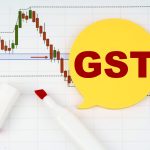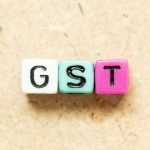Cess is a form of tax levied by the Central Government to improve the state of public welfare in the country. The government brings the application of Cess when there is a need for funds for some public welfare. And its imposition is stopped once the purpose is met.
Education cess is an additional levy applied to tax liability by the government to generate additional revenue that will be used to fund primary, secondary, and higher education facilities. It is levied in two parts, Primary Education Cess and Secondary and Higher Education Cess, on one’s tax liability.
The government uses the money received as an education cess on income tax to build proper infrastructure for educational institutions and also, at the same time, to provide proper and qualitative education to the underprivileged sections of the society.
Learn The Basics
What Does Cess Mean?
Cess is an amount collected by the government from the taxpayers for the welfare of the underdeveloped sections of the country. It is used only for specific purposes and is terminated once the purpose is fulfilled. The amount collected by Cess cannot be used for any purpose other than the ones defined in its collection.
Key Takeaways
- Education Cess was introduced in the 2018 Budget by Finance Minister Arun Jaitley.
- The government levies the Education Cess to improve the country’s educational quality.
- Education cess is divided into two parts – Primary Education Cess and Secondary and Higher Education Cess.
- The total education cess rate stands at 3% of the taxpayer’s tax liability.
- Since FY 2018-19, the education cess has been levied at 4% of the tax liability with the health cess.
Who Are Required to Pay Education Cess on Income Tax?
After knowing the education cess meaning, it is also important to know who needs to pay for it. All individuals and corporations who need to pay taxes to the government also need to pay education cess annually. It is important to note that it is a compulsory payment to the government, and its non-payment can attract legal actions and penalties.
What is the Education Cess Percentage?
The percentage of Education Cess is divided into two parts – Primary Education Cess, which stands at 2% of the tax liability and the Secondary and Higher Education Cess which is levied at the rate of 1% of the tax liability. Together they form the 3%, which constitutes what is known as the education cess.
Since the financial year 2018-19, the education cess has been combined with the health cess and is cumulatively levied at a rate of 4% of the tax liability and is called Health and Education Cess.
For What Purposes Does the Government Use the Education Cess?
Some use cases where the government utilises Education Cess are described below. The purpose is to increase the public’s welfare and the country’s education system.
- The government uses the funds collected by way of education cess for building proper educational infrastructure for the children to have access to education in a better way.
- The students also arrange mid-day meals via education cess funds under various government schemes.
- This education cess also helps bring better teachers for the children as this money is used to give salaries to the government school teachers.
- The collected Cess is also used to improve internet connectivity in the country’s remote areas to enable all children access to quality education. During the COVID-19 pandemic, education services were completely provided online to make the same accessible to remote area students.
- The education cess funds are also used towards the ‘Eklavya Model Residential School’ run by the government for tribal students and those belonging to the Below Poverty Line (BPL) families.
- The education cess is also used for the ‘Rashtriya Madhyamik Shiksha Abhiyan’, which aims at promoting the 10+2 education in the country.
- It is also used to provide education loans to students at lower interest rates.
- The funds collected via education cess also go towards funding the opening of new branches of premier government educational institutes such as IITs and IIMs.
What is the Difference Between Cess and Tax?
Tax and Cess are two different welfare instruments of the government and should not be confused as the same thing. Below we have illustrated in detail the differences between taxes and Cess collected by the government –
| Basis | Tax | Cess |
| Basis for calculation | It is calculated as a percentage of one’s gross salary minus allowed deductions. | It is calculated on one’s tax liability. |
| Use By Government | It can be used for any societal welfare purpose as deemed fit by the government. | It can be used only for the social welfare purposes defined at the time of its collection. |
| Sharing Rights of the State Government | The Central Government needs to compulsorily share the tax proceeds with the state governments. | The Central Government may or may not choose to share the cess proceeds with the state governments. |
| Discontinuation | Taxes can continue to be levied on taxpayers as long as the government wants. | Cess collection has to be discontinued once the purpose for which it was collected has been fulfilled. |
How Does Cess Impact Taxpayers?
There are two implications of the application of Cess on taxpayers –
- Firstly, their tax liability increases, and so does the cash outflow.
- Taxpayers also face an indirect implication of the education cess by increased prices of the items on which the same has been levied.
Education Cess Calculation Illustration
Let’s understand the calculation of education cess better with the help of an illustration.
Suppose Mr X earns an income of INR 15,00,000 and has calculated his tax liability as INR 1,20,000. So, he needs to pay 4% of INR 1,20,000 as Health and Education Cess, which amounts to INR 4,800. So, now, his total tax liability is that of INR 1,20,000 + INR 4,800 = INR 1,24,800
Did You Know?
Did you know that in the budget session of 2018, India’s Finance Minister Arun Jaitley brought several measures to improve public welfare and the 3% education cess on income tax!
Words to Remember
It would be useful to get an insight into the following two terms, which are most commonly used whenever there is a discussion about education cess.
- Primary education is the beginning of the educational system in one’s life. Education obtained from Class I to Class VIII is termed primary education in India.
- Secondary Education- Secondary education begins as soon as one enters Class IX and lasts till one completes Class XII.
Conclusion
Education cess is a sum calculated as a percentage of one’s tax liability and must be paid to the government. However, it can only be used by the government to improve the country’s education infrastructure and other educational facilities. Earlier, it was levied at 3%; however, since the financial year, it has been levied as a combination of Health and Education Cess, which stands at 4% of one’s tax liability.
FAQs
No, it is not the same. The Primary Education cess is 1% of the one’s tax liability, and the Secondary and Higher Education cess rate is 2%. All in all, together, the education cess rate is 3%. With Health Cess, it becomes Health and Education Cess and is levied at 4%.
Education cess was introduced in the 2018 budget by then Finance Minister Arun Jaitley.
Since the Health and Education Cess rate is 4%, do you need to pay INR 3,600 above your tax liability?
Yes, all Indian taxpayers must pay the education cess.
No. There are no deductions available for the payment of education cess as the same is meant to uplift the status of educational facilities in the country.
Also read about Portfolio Investment on Investment Simplified.




